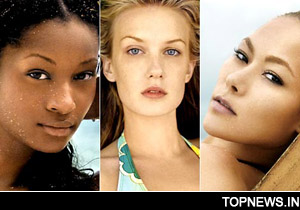Novel ‘beauty machine’ can change plain Jane’s into drop-dead stunners
 Washington, November 7 : Tel Aviv University researchers have built a “beauty machine” that can turn a picture of an ordinary face into that of a cover model, just with the press of a button.
Washington, November 7 : Tel Aviv University researchers have built a “beauty machine” that can turn a picture of an ordinary face into that of a cover model, just with the press of a button.
Though the output of the system is presently limited to digitised images, the researcher believe that the software may prove useful for guiding plastic surgeons and aid magazine cover editors.
They even foresee its use in digital cameras.
"Beauty, contrary to what most people think, is not simply in the eye of the beholder," says lead researcher Prof. Daniel Cohen-Or of the Blavatnik School of Computer Sciences at Tel Aviv University.
He says that computers can be used to objectify and boil down attractiveness to a function of mathematical distances or ratios, something that is the basis for his beauty machine.
“Beauty can be quantified by mathematical measurements and ratios. It can be defined as average distances between features, which a majority of people agree are the most beautiful,” says Prof. Cohen-Or.
“I don''t claim to know much about beauty. For us, every picture in this research project is just a collection of numbers," he adds.
Prof. Cohen-Or involved his graduate student Tommer Leyvand and two colleagues in his study, and, together, they surveyed 68 Israeli and German men and women, aged 25 to 40.
The researchers asked the study subjects to rank the beauty of 93 different men’s and women’s faces on a scale of one to seven. The scores were later entered into a database and correlated to 250 different measurements and facial features, such as ratios of the nose, chin and distance from ears to eyes.
The team used the information thus collected to create an algorithm that applied desirable elements of attractiveness to a fresh image.
As compared to heavily processed Photoshop images that can make magazine cover models and celebrities unrecognisable, Tel Aviv University’s “beautification engine” is subtler because observers say that the final image it produces retains an unmistakable similarity to the original picture.
There is one circumstance where the beauty machine doesn’t work like a charm: when a celebrity’s face is changed.
“We’ve run the faces of people like Brigitte Bardot and Woody Allen through the machine and most people are very unhappy with the results. But in unfamiliar faces, most would agree the output is better,” Prof. Cohen-Or says.
He has revealed that he is planning to develop the beauty machine further—to add the third dimension of depth.
An article on the new system has been published in the proceedings of Siggraph. (ANI)